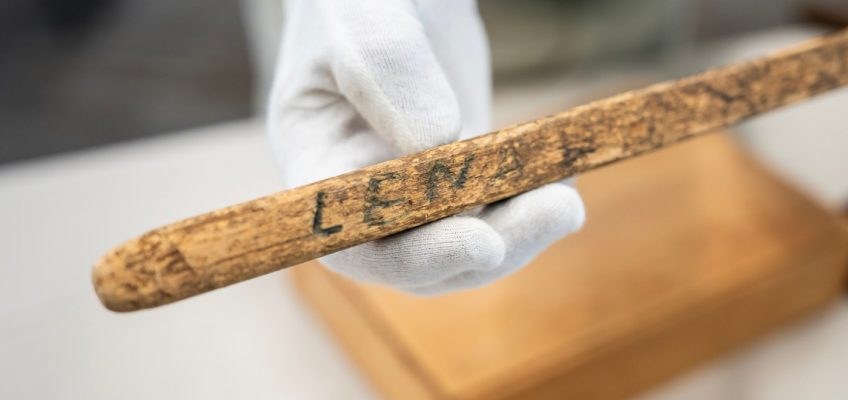September has rolled in and brought with it the start of another NFL football season. For many sports fans, that means one thing on Sunday (and some Mondays and Thursdays) — throwing a tailgate party with all their favorite foods to eat before and during the game.
With that in mind, we’ve come up with a budget-friendly tailgate menu.
Quarterbacking this 3-point spread of recipes is a favorite member of the nightshade family that’s harvested in late summer and early fall — spicy chile peppers.
Chile peppers are often considered vegetables but like tomatoes, they are botanically fruit. Their heat is measured in Scoville Heat Units, with habaneros and ghost peppers registering the highest numbers and mild peppers like Anaheim having the lowest.
The two chile-forward dishes in this meal feature a mix of mild (poblano) and medium (jalapeno) chile peppers. Rather than scorch the taste buds, they will just provide a pleasant, moderate burn.
Spicy, cheese-filled jalapeno poppers have been a popular appetizer since their debut in the 1970s. A Tex-Mex riff on the Mexican dish chile rellenos, it involves hollowing out a jalapeno pepper with your fingers or a spoon, then stuffing it with a mixture of cheeses and spices.
They can be smoked or grilled and sometimes are wrapped in bacon or battered and deep-fried for extra crunch. Our recipe is much easier: After filling the shells with a mixture of cream cheese and cheddar, we simply sprinkled some buttery panko crumbs on top and added a little barbecue seasoning before baking them to a crisp in the oven. And talk about cheap: A bag of jalapenos cost less than $2 at my local grocery.
The Mexican-style pork chile verde that serves as a main course is also a cinch to prepare, and in fact can be made a day or so in advance and then reheated on game day.
It’s surprisingly economical for a party dish — the 2-pound boneless pork shoulder (also known as a picnic roast) cost less than $6, and the tangy tomatillos and green chiles that make the sauce so wonderfully vibrant are also fairly easy on the pocketbook. A pound of tomatillos ate up only $3 of my $25 budget, and the two chiles — jalapenos and a poblano — cost only 82 cents.
The chili verde is great on its own, with or without the optional garnishes. But if you don’t mind spending a few extra dollars, you could use it to make enchiladas or smothered burritos or even tuck it into a taco shell. It also works as a topping for nachos or eggs.
The football-shaped cookies that close out the meal dig a little deeper into the pocket than the poppers because they’re made with solid bar chocolate and butter. But at just 16 cents per cookie (the recipe makes 3 dozen), you’d be hard-pressed to find a more budget-friendly scratch-made dessert for a crowd. And if you’re good with a tube of icing and a piping tip (I’m not!) and can personalize them with team colors and numbers, they’re also kind of fun.
All told, the meal for four came in 27 cents under budget at $24.73, or just a little over $6 per person.
Jalapeño Poppers
The best game-day appetizers are finger-friendly. These cheesy jalapeno poppers come together in minutes with just a handful of ingredients. They’re delicious hot, warm or at room temperature.
It’s a good idea to wear gloves when working with jalapenos to protect your skin from the burning capsaicin oil. Always avoid touching your eyes, nose or face after handling them, and be sure to wash your hands and cutting board with hot soapy water to remove any residue.
I used my (gloved) fingers to remove the ribs and seeds but a small spoon also works well.
If your budget allows, consider wrapping the poppers in bacon for an extra salty crunch.
INGREDIENTS
8 jalapeños
4 ounces cream cheese, softened
1 teaspoon garlic powder
4 ounces shredded sharp cheddar or Mexican blend cheese
2 tablespoons chopped cilantro
1/4 cup panko bread crumbs
1 tablespoon melted butter
Sprinkle of barbecue rub, optional
Preheat the oven to 400 degrees.
DIRECTIONS
Slice the jalapenos in half lengthwise. (It helps to wear gloves.) Use a small spoon to scoop out the seeds and membranes.
Mix cream cheese, garlic powder, cheddar cheese and cilantro in a bowl until well combined.
In a separate bowl, stir together panko crumbs and melted butter until well combined.
Fill jalapeños with the cheese mixture, then top with the panko mixture.
Place on a baking pan topped with parchment paper, dust with barbecue rub (if using) and bake 18-22 minutes, or until golden.
Cool 5-10 minutes before serving.
Serves 4-6.
— Gretchen McKay, Post-Gazette
Pork Chile Verde
Chili is a classic football food because it can be made ahead of time, and is easily transported to a tailgate party. This hearty green chili gets a warming kick from jalapeno and poblano peppers and tangy tomatillos. I used boneless pork shoulder but you could easily substitute chicken.
The spices can be adjusted according to taste.
INGREDIENTS
For chili:
2 tablespoons vegetable oil
2 pounds boneless pork shoulder, cut into 2-inch pieces
1 yellow or red onion, diced, or mixture of both
2 teaspoons kosher salt, or to taste, divided
2 teaspoons dried oregano
2 teaspoons ground cumin
1/2 teaspoon ground coriander
1/4 teaspoon cayenne pepper
10 fresh tomatillos (about 1 pound), removed from husks and rinsed
2 jalapeño chile peppers, seeded
1 poblano chile pepper, seeded
6 cloves peeled garlic, chopped
1/2 cup packed cilantro leaves
2 1/2 cups chicken stock, more if needed
2 cups quartered baby potatoes (about 3/4 pound)
Freshly ground black pepper to taste
For optional garnish:
1/4 cup sour cream
1/2 cup pickled red onions
1 tablespoon chopped fresh cilantro
DIRECTIONS
Heat oil in a pot over high heat until nearly smoking.
Add pork cubes in a single layer. Let sear until brown on one side, 4-5 minutes. Mix, turning pieces over to brown on the other side, 4-5 minutes. Add onion and 1/2 teaspoon kosher salt. Cook and stir until onion is translucent, about 4 minutes. Add oregano, cumin, coriander, and cayenne; cook and stir until seasonings are fragrant, about 2 minutes. Reduce the heat to low.
Cut tomatillos into quarters. Place into a blender with chili peppers, garlic and cilantro. Add chicken stock. Pulse on and off until pieces start to break down, then blend until mixture has liquefied, about 30 seconds.
Stir sauce into pork mixture. Add 1 teaspoon kosher salt and bay leaf. Increase the heat to high and bring to a boil. Reduce the heat to low and maintain a slow but steady simmer for about 1 hour.
Add potatoes, remaining 1/2 teaspoon kosher salt and black pepper. If the mixture has reduced to where potatoes are not immersed, add more broth to cover. Simmer until pork and potatoes are tender, 45-60 minutes.
Garnish individual servings with a dollop of sour cream, some pickled red onions and cilantro.
Serves 4-6.
— Gretchen McKay, Post-Gazette
Football Sugar Cookies
Cookies make a great tailgate dessert because they don’t have to be portioned and travel well. I made these with football- and jersey-shaped cookie cutters.
Chilling the dough for an hour or so prior to baking makes a difference — it controls the spread while baking and also concentrates the flavor.
INGREDIENTS
3 cups all-purpose flour, plus more for dusting
1 teaspoon baking powder
1 teaspoon salt
1 1/2 sticks butter, softened
1 cup granulated sugar
2 eggs
1 teaspoon vanilla extract
3 ounces unsweetened chocolate, melted and cooled
White icing, for decorating
DIRECTIONS
Preheat oven to 350 degrees.
In medium bowl, combine flour, baking powder and salt. In large bowl, beat together butter and sugar with electric mixer on medium speed until light and fluffy. Add eggs and vanilla; mix well.
Add melted chocolate and beat until smooth. Gradually add flour mixture to butter mixture, beating until smooth. Divide dough in half and form into 2 discs. Cover and chill at least 1 hour or until firm.
On lightly floured surface, roll out dough approximately 1/8 -inch thick. Dip cutters in flour, cut and transfer cookies to cookie sheet.
Bake 8-10 minutes. Cool on cookie sheet 2 minutes. Remove to cooling grid and cool completely, then decorate to look like a football.
Use a small piping bag with a tiny round tip or a zip-top bag with the corner snipped off to pipe a single white line down the center of each cookie. Add 5 — 6 shorter horizontal lines across the central line to create the laces.
Makes 3 dozen cookies.
Related Articles
A fiesta of flavor for Hispanic Heritage Month
Recipes: Make these Rosh Hashanah dishes to usher in a sweet new year
Quick Fix: Beef Fried Rice
Ale Caesar: Beer pairings for your favorite salads
You and your kids can make goldfish and animal crackers at home




